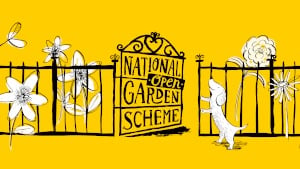About Nimrod, 35 Alexandra Road
In spring the meadow is full of crocus, daffodils and bluebells. Cowslips and fritillaries give way to azaleas and rhododendrons, perennials take over in summer and the trees dominate autumn. We don’t do summer bedding or veg!
The garden started life as a half-acre communal garden for the surrounding Victorian houses owned by Lady Foley’s butler. Edward Elgar lived for a short while in ‘Forli’, opposite, composing on the upper lawn and playing tennis on the lower one.
The garden has been developed into several different areas with many more trees. This is a plantswoman’s garden, where every item has an emotional attachment and a history. It is constantly changing and you may see wooden projects and structures in the process of evolving.
This is a haven in suburbia with little surprises around every corner.
With help, the garden can be accessed by wheelchair, there are few steps but gravel paths and gradients. Please phone in advance as parking is normally on the road and access is via a gravel track, if advised we may be able to offer closer parking.
Refreshments and toilet available.
.

.jpg)
.jpg)
.jpg)
.jpg)
.jpg)
.jpg)
.jpg)
.jpg)
.jpg)
.jpg)
.jpg)
.jpg)



.jpg)
.jpg)
.jpg)
.jpg)
.jpg)
.jpg)